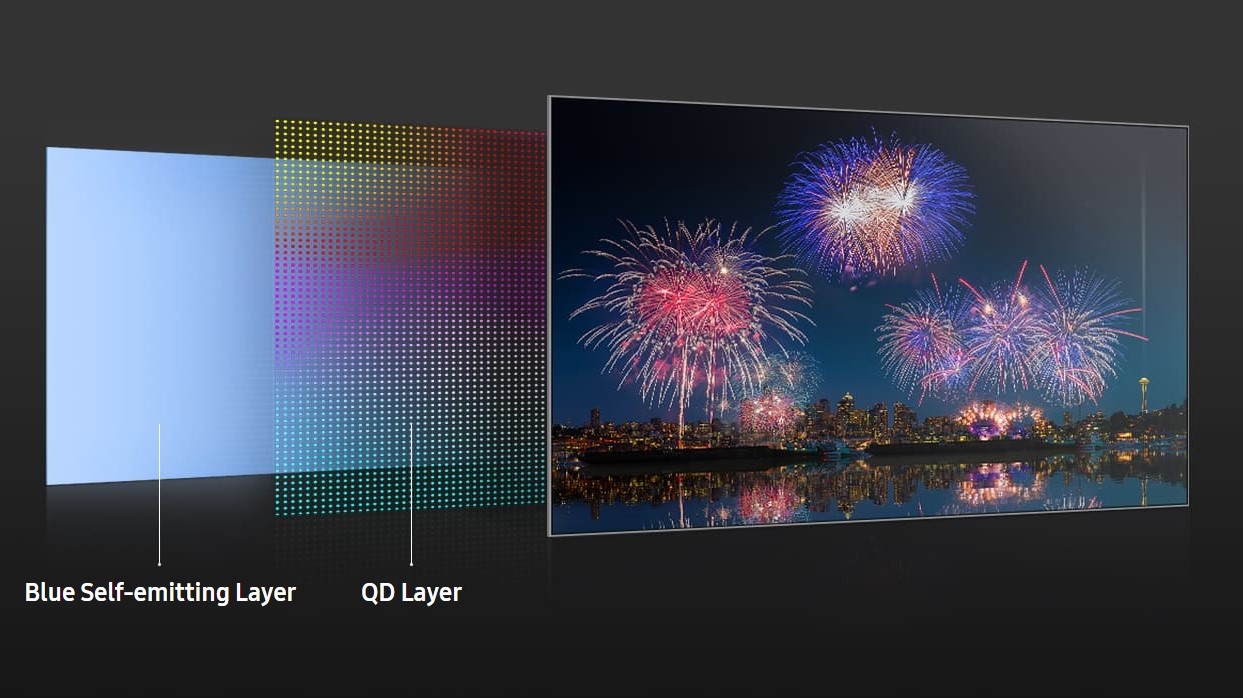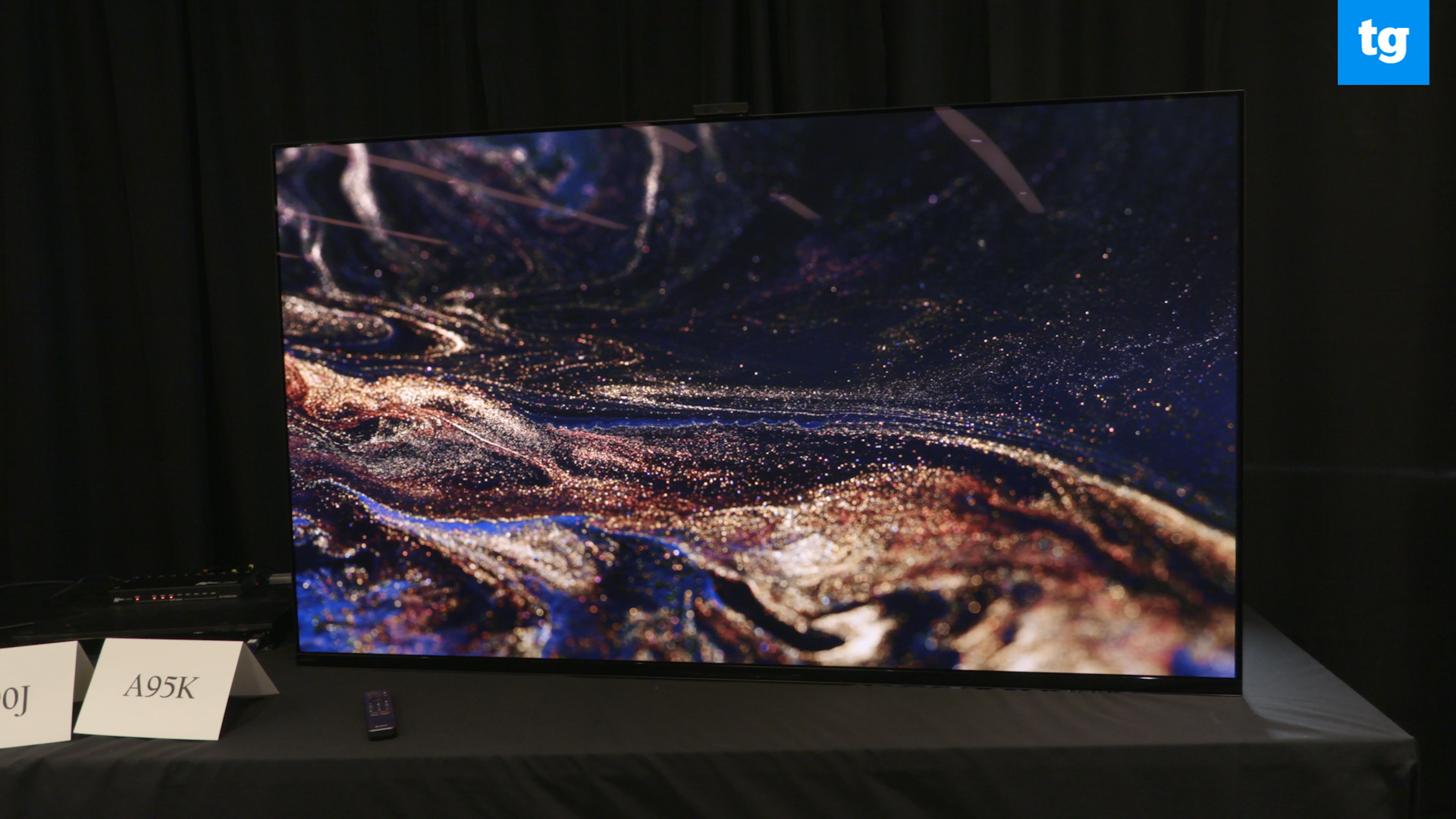
Update: Samsung’s affordable OLED TVs just came ‘to a halt’ — here’s why
Color accuracy and vibrancy are huge factors in how TVs look — and often they’re something that TVs lose when you start sitting farther off to the side of your screen.
It’s something we in the industry call off-axis viewing, and it turns out that QD-OLED screens do a better job of holding on to their color than both LED-LCD TVs and regular OLEDs.
While that sounds like a rather useless metric — most folks do in fact sit in front of the TV — TV sizes are increasing at such a fast rate now that at some point you will almost certainly have to watch them off-axis, and then you’ll be thankful that QD-OLED TVs look so good.
Last week, we were invited to an event at Samsung’s facilities in New Jersey where we could spend time with the new Samsung Q95B OLED TV. It might not be the cheapest TV coming our way in 2022, but it’s worth considering if you need a TV that can accommodate all your guests in a large, open living room or for your new sports bar.
So what makes QD-OLED so special?
The name QD-OLED stems directly from the design of the panel that’s a combination of quantum dot (QD) and organic light-emitting diode (OLED).
To be fair, the best OLED TVs have always been known for their ability to hold color accuracy when viewed off-axis, but QD-OLED takes things one step further by enhancing the color saturation through the quantum dot filter.
Get instant access to breaking news, the hottest reviews, great deals and helpful tips.
When compared to a traditional LED-LCD, a QD-OLED TV’s light-emitting layer is directly behind the glass substrate of the screen, which is what helps it hold color as you move off-axis. That’s a big difference from traditional LED-LCD screens where the lighting element and color filter are closer to the back of the screen than the front.
In short, you’re going to see better colors from every angle when compared to an older LED-LCD TV and better off-axis viewing when compared to an OLED TV.

Why do we want better color saturation anyways?
The idea of off-axis viewing may sound strange — especially in the context of a living room TV — you’re probably sitting off-axis to a TV more often than you think.
Imagine you’re at a sports bar watching a game. It’s rare that you’ll be right in front of the screen. More likely than not, you’ll probably be looking at a TV that’s either above you on the wall, or at an angle from a booth. In both those cases you’d be able to see the difference between a traditional LED-LCD TV and a QD-OLED.
Another scenario where you might want to go for a QD-OLED is if you have a living room with seating on both sides of the TV, as that would then give people sitting on those seats the same experience as the people sitting directly in front of the TV.
Giving guests the highest quality viewing experience might not be high on your list of priorities, but given some of the other benefits of QD-OLED, it’s a nice bonus if nothing else.

The bad news? QD-OLEDs are pricier and (so far) only come in two sizes
As with most bleeding-edge technologies, first-generation QD-OLED TVs are looking to be a little pricier than traditional OLED TVs — even some really good ones like the LG C2 OLED.
The Samsung S95B OLED we mentioned earlier starts at $1,997 for a 55-inch screen whereas you can get one last year’s LG C1 OLED for around $1,096. The same is true for LED-LCD TVs — Samsung’s brand-new QN90B QLED TV, available at $1,699 for a 55-inch screen size, also costs less than the S95B.
Should you decide you want Sony’s QD-OLED, the Sony A95K, you’re looking at $2,999 for the 55-inch version and a whopping $3,999 for the 65-inch screen. Either option is nearly double what a regular OLED TV is selling for in a similar size.
To make things a bit trickier, QD-OLED TVs aren’t available in a slew of sizes — right now there’s only a 55- and a 65-inch version of the TV from Samsung and Sony. That means there’s no 75-inch model or an 85-inch model that could leverage the wide off-axis viewing angles that the technology offers.
We’ve only just begun to see how all of these QD-OLED screens will compare to LED-LCD TVs in the other key metrics such as peak brightness, contrast and latency but, based on everything we’ve seen so far, off-axis viewing seems to be the one area in which we’re easily expecting to see them hold their ground against the competition.
Looking for one of the best TVs but don't want to overspend on it? The Samsung QN90A offers great off-axis viewing for an LED-LCD TV and is still one of the best options for the price.

Nick Pino heads up the TV and AV verticals at Tom's Guide and covers everything from OLED TVs to the latest wireless headphones. He was formerly the Senior Editor, TV and AV at TechRadar (Tom's Guide's sister site) and has previously written for GamesRadar, Official Xbox Magazine, PC Gamer and other outlets over the last decade. Not sure which TV you should buy? Drop him an email or tweet him on Twitter and he can help you out.
